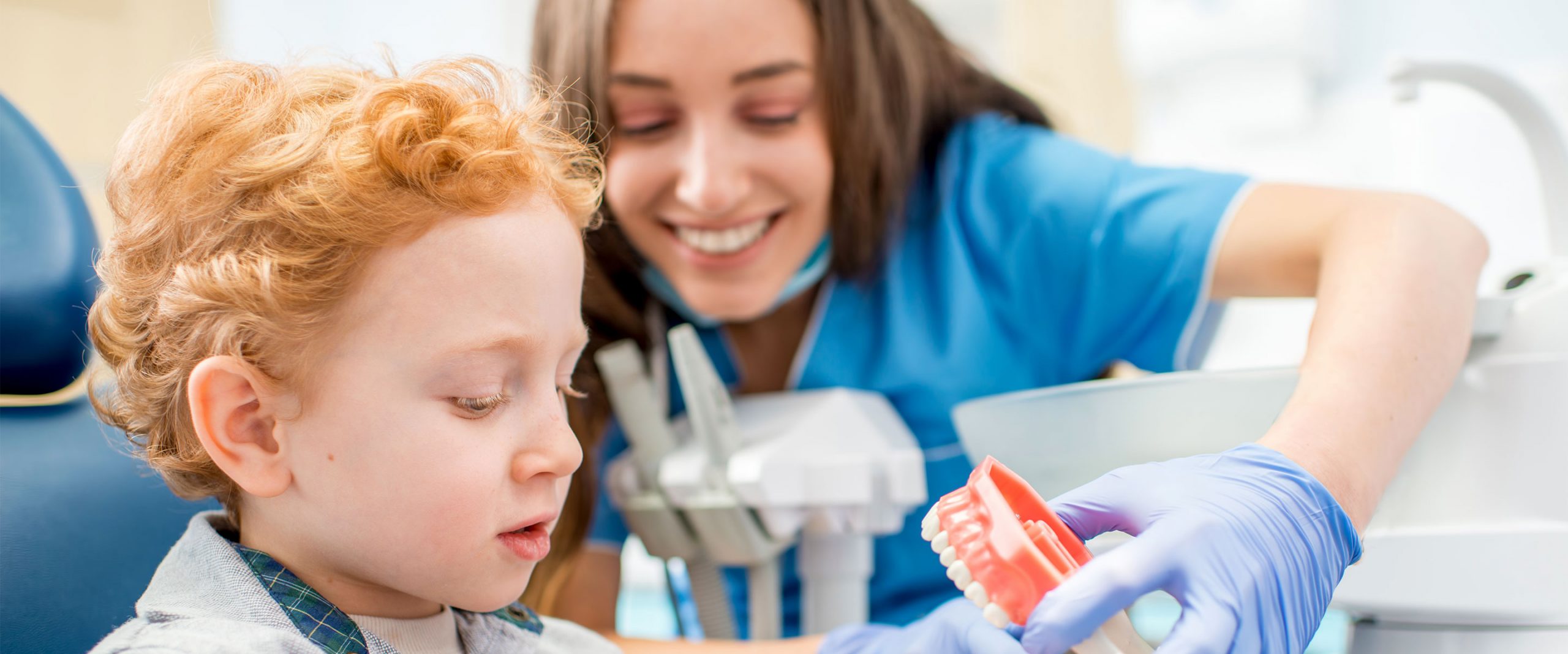Why would a dentist recommend silver diamine fluoride (SDF) for my child?
SDF can stop cavities from growing. The treatment is quick, comfortable and affordable. Because SDF can keep decay from getting worse, fixing the teeth can possibly be put off until a child is older and consequently would typically have an easier time sitting through treatment. Sometimes SDF is the only treatment needed if the cavity is very small.
What is silver diamine fluoride?
SDF is a colorless liquid made up of fluoride and silver ions. It kills the bacteria that cause cavities. SDF is an antimicrobial agent that can stop cavities from growing by making the tooth harder, and limiting the growth of bacteria that causes tooth decay.
What is the treatment like?
SDF is painted on a cavity with a small brush. Treating a cavity takes about two minutes. Best of all, the application does not hurt and requires no drilling or injection of anesthetic. The treatment has a metallic taste and can sometimes cause a mild irritation to the gums that will resolve by itself in a couple of days.
Is silver diamine fluoride safe?
Very safe, according to the evidence-based clinical guidelines of the American Academy of Pediatric Dentistry. SDF has been used in Japan for over 40 years and in Australia and China for over 10 years. Most important, it can postpone or even prevent the need for sedation or general anesthesia, especially for very young patients.
You should not be treated with silver diamine fluoride if:
- You are allergic to silver.
- Cavities are so large that they involve the nerve of the tooth.
- There are open sores or ulcers in your child’s mouth.
Does it work to stop tooth decay?
Yes. Based on clinical trials, SDF works to stop cavities from growing in 70 to 90 percent of treated teeth (or as many as nine out of 10 teeth). Teeth treated with SDF need to be checked by a dentist at least every six months to make sure the tooth decay has not progressed.
Is it true SDF turns teeth black?
Cavities treated with SDF turn black, the teeth do not. This color change is permanent, lasting the life of the tooth. If the cavities are on the back teeth, it is barely noticeable. If the cavities are on the front teeth, it can be very noticeable. If SDF touches the lips or skin, perhaps if a patient moves too much during treatment, it will leave a dark stain for a few days.
Why treat cavities in baby teeth?
Cavities on children’s teeth can grow very fast and cause pain and infection. The factors that started the cavities in the first place can cause decay in other teeth, and as cavities get larger, the nerve of the tooth can become infected and lead to serious infections in the body.
Baby teeth hold space for the proper placement of the permanent teeth. If a baby tooth is lost too early, it can lead to space loss and crowding in the permanent dentition.
What can I do at home to prevent cavities?
For the treatment to work its best:
- Keep your child’s teeth clean by brushing with fluoride toothpaste after breakfast and before bed.
- Cut down how much and how often your child has foods and drinks with sugar in them.
- Visit your pediatric dentist at least every six months.
Important things you should know about this treatment are:
- If patients move too much, and the liquid touches their lips or skin, there could be a dark stain for a few days.
- SDF may need to be re-applied for the effects to continue.

